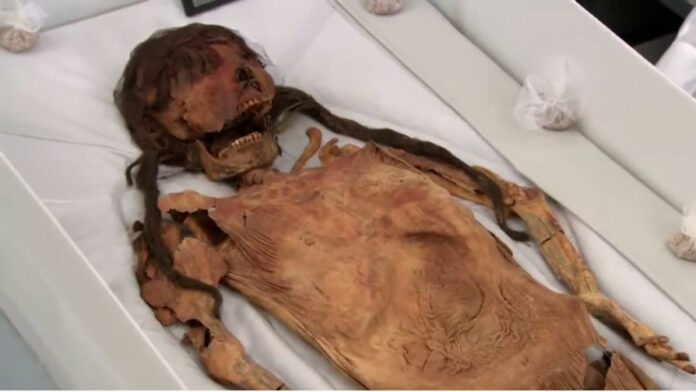In 2006, a remarkable archaeological discovery was made at the El Brujo site in Peru that reshaped our understanding of the ancient Moche civilization. The mummy of a young woman, now known as the Lady of Cao, was unearthed, challenging long-held beliefs about Moche society.

The Moche Civilization
The Moche people thrived along the northern coast of Peru from the 1st to 5th centuries CE, contemporary with the Maya civilization. They built impressive adobe pyramids, developed advanced irrigation to cultivate the arid desert, and used religion as a unifying force.
The Discovery of Lady Cao

The female mummy, affectionately dubbed Lady Cao, was one of the most significant Moche archaeological finds. Her elaborate burial challenged notions that Moche society was ruled solely by male warriors.
Insights from Lady Cao’s Remains
Her Life and Death

Examinations revealed Lady Cao died in her mid-20s around 450 CE, likely due to childbirth or pregnancy complications. As the eighth royal tomb discovered in 25 years, her burial’s richness pointed to the great power she held.
Symbolic Adornments

Lady Cao wore a gold headdress with a puma design and a feline-adorned beaded necklace. Her body bore many tattoos of snakes, spiders, trees of life and star motifs also seen in El Brujo temple friezes – all imbued with ceremonial meanings.
Lady Cao’s Significance
Challenging Assumptions
Her discovery countered previous ideas that Moche culture was male-dominated. It highlighted the high status women could attain in Moche society.
Priestess or Ruler?
Scholars now believe Lady Cao may have been a powerful priestess or even a ruling governess of the Chicama Valley. Without a written language, her remains speak volumes about Moche civilization.
Conclusion
The Lady of Cao remains one of ancient Peru’s most enigmatic and revealing figures. Her mummy continues to shed new light on the complexities of Moche society and the significant roles women played in forging this intriguing civilization.

